Rivers that Shaped European Cities
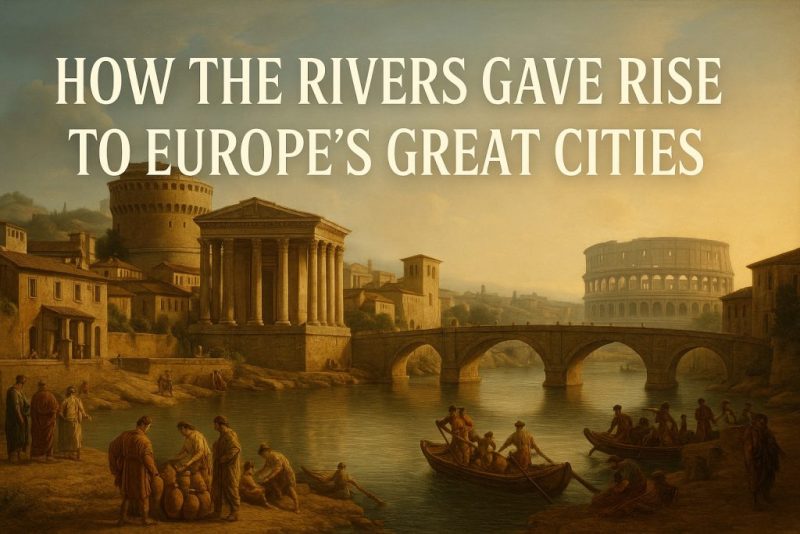
Discover how rivers that shaped European cities—like the Danube, Rhine, Seine, and Tiber—helped build Vienna, Cologne, Paris, and Rome into powerful centers.
The rivers that shaped European cities are more than just water—they’re the ancient arteries of empire, trade, and culture. From the misty banks of the Danube to the sun-kissed curves of the Tiber, rivers have carved not just landscapes, but legacies. Long before the age of highways and railroads, they were lifelines—natural highways, freshwater sources, and the unseen architecture behind the birth of great capitals.
Let’s journey along four of the most iconic rivers that shaped European cities—the Danube, Rhine, Thamnes, Neva, Seine, and Tiber—and explore how they nurtured Vienna, Cologne, Paris, St. Petersburg, London and Rome, from Roman outposts and medieval trade hubs to enduring symbols of European civilization.
Explore the Mighty Rivers of Europe
Danube & Vienna: The Eastern Gateway
Among the rivers that shaped European cities, the Danube stands out as a vital thread connecting East and West. Vienna grew where the Alps meet the Danube—a strategic location that made it both a defensive bulwark and a trading hub. As the Romans established Vindobona on these banks, the river allowed swift movement of troops, goods, and ideas. In medieval times, Vienna’s rise as a cultural and political capital of the Habsburgs was tied to its riverine access to Eastern Europe and the Balkans. The Danube was not just water—it was influence.
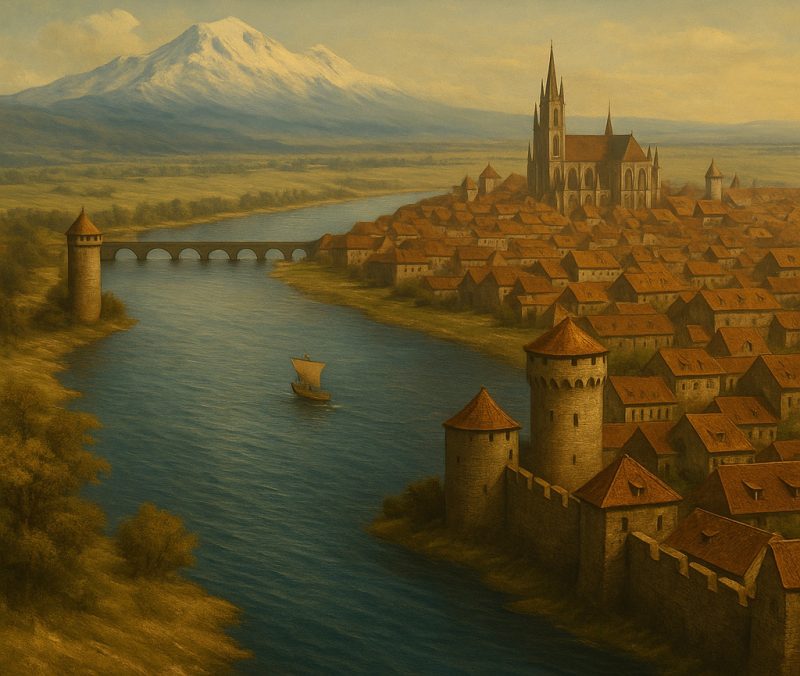
Danube & Budapest: A City of Bridges and Beauty
Further downstream, the Danube performs another act of urban alchemy: Budapest. Once two cities—Buda and Pest—divided by the river, they were joined in the 19th century by the iconic Chain Bridge, transforming Budapest into a modern capital. The Danube slices the city in two, but binds it through trade, transportation, and timeless views. The Parliament Building reflects in its waters, while thermal baths and grand cafés line the hills and flats. The Danube gave Budapest both drama and grace.

Rhine & Cologne: A Fortress of Faith and Trade
The Rhine is one of the most powerful rivers that shaped European cities, serving as the economic backbone of the Holy Roman Empire. Cologne—once the Roman colony of Colonia Claudia Ara Agrippinensium—flourished along its banks. Its prime location allowed it to control river traffic and grow into a medieval mercantile giant. Cologne’s majestic Gothic cathedral rose beside a river that carried not only goods and wealth but also pilgrims and power. The Rhine transformed Cologne into one of the richest and most influential cities in northern Europe.
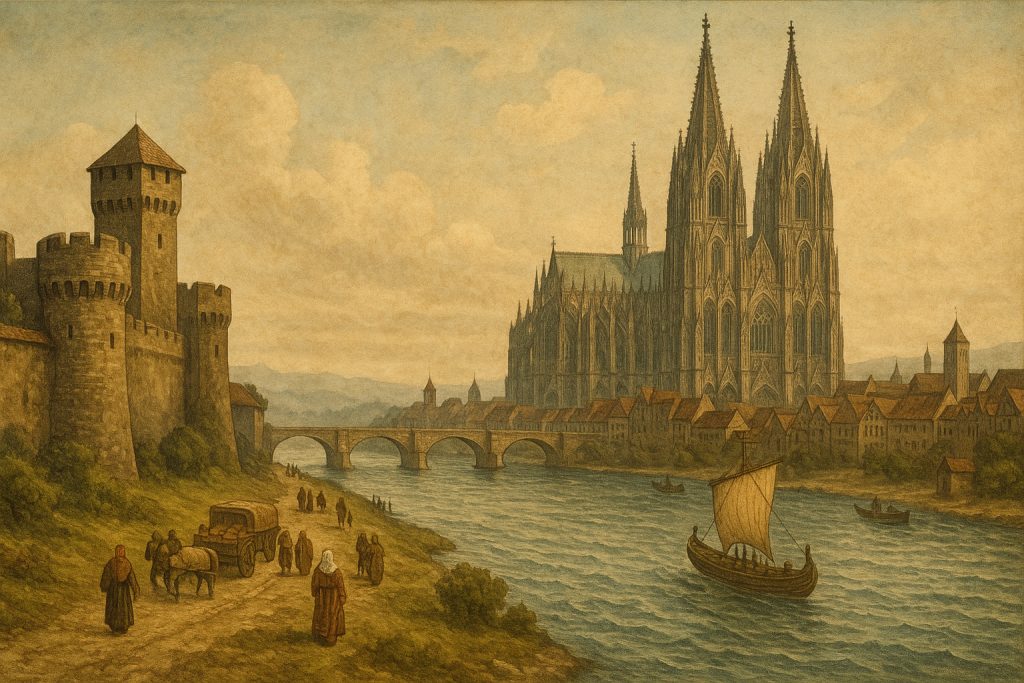
Seine & Paris: The River of Power and Poetry
Paris is arguably the most poetic example among the rivers that shaped European cities. The ancient Gallic settlement of Lutetia took root on the Île de la Cité, cradled by the Seine’s protective waters. The river became Paris’s moat, its artery of commerce, and its eternal muse. During the Middle Ages, the Seine helped Paris emerge as a hub of trade, learning, and power. Its flowing waters inspired revolutions, crowned emperors, and carried secrets from Notre-Dame to the Bastille.

Tiber & Rome: Where Empire Was Born
When it comes to the rivers that shaped European cities, none holds more myth or meaning than the Tiber. Rome’s very origin story begins here—with twins, wolves, and fate. But even beyond myth, the Tiber’s waters were essential to Rome’s rise as a global empire. Linking the city to the Mediterranean, it fueled Rome’s growth with the flow of goods, grain, marble, and soldiers. Though sometimes prone to flooding, the Tiber remained Rome’s irreplaceable backbone through centuries of glory, collapse, and rebirth.
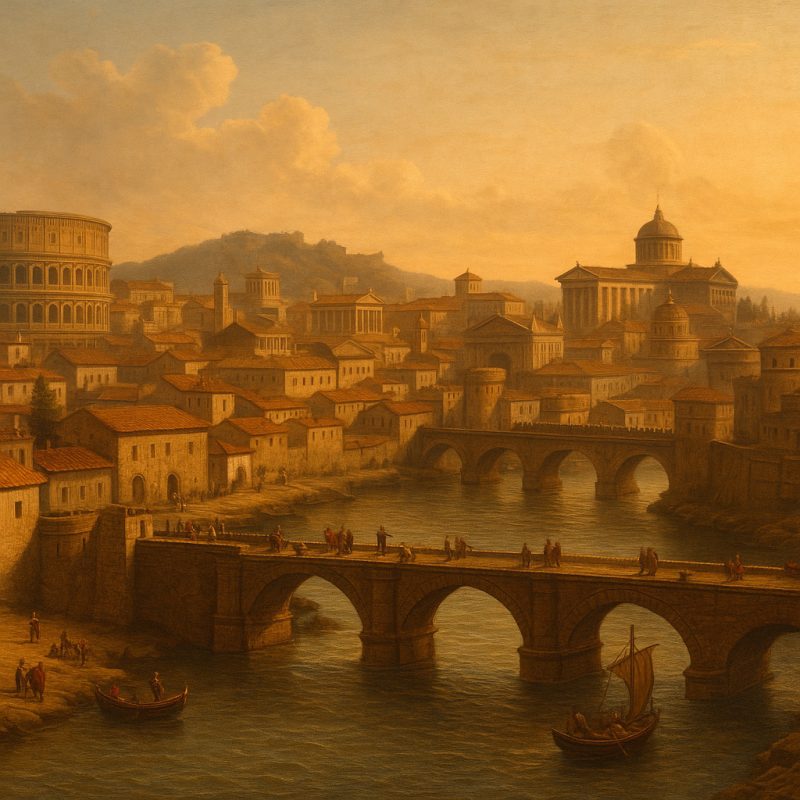
Thames & London: The Heart of an Island Empire
The Thames is the lifeblood of London—a city that rose from a Roman trading post to the capital of a global empire. Navigable and tidal, the Thames gave London its unique rhythm, connecting it to the sea, the continent, and the world. Along its banks, the city’s history unfolded: Viking raids, Tudor pageantry, industrial might, and Blitz defiance. Tower Bridge and the Palace of Westminster look down on a river that has witnessed it all. The Thames made London not just powerful—but possible.

Neva & St. Petersburg: A Window to the West
At the northern edge of Europe, the Neva River flows into the Gulf of Finland, and on its banks stands St. Petersburg—the imperial dream of Peter the Great. Built where river meets sea, the city was a calculated act of ambition and geopolitics, designed to give Russia a Western-facing capital. The Neva brought in goods from across Europe and served as a grand stage for palaces, cathedrals, and revolutions. In the mists rising from its icy waters, St. Petersburg became a city of opulence and upheaval.
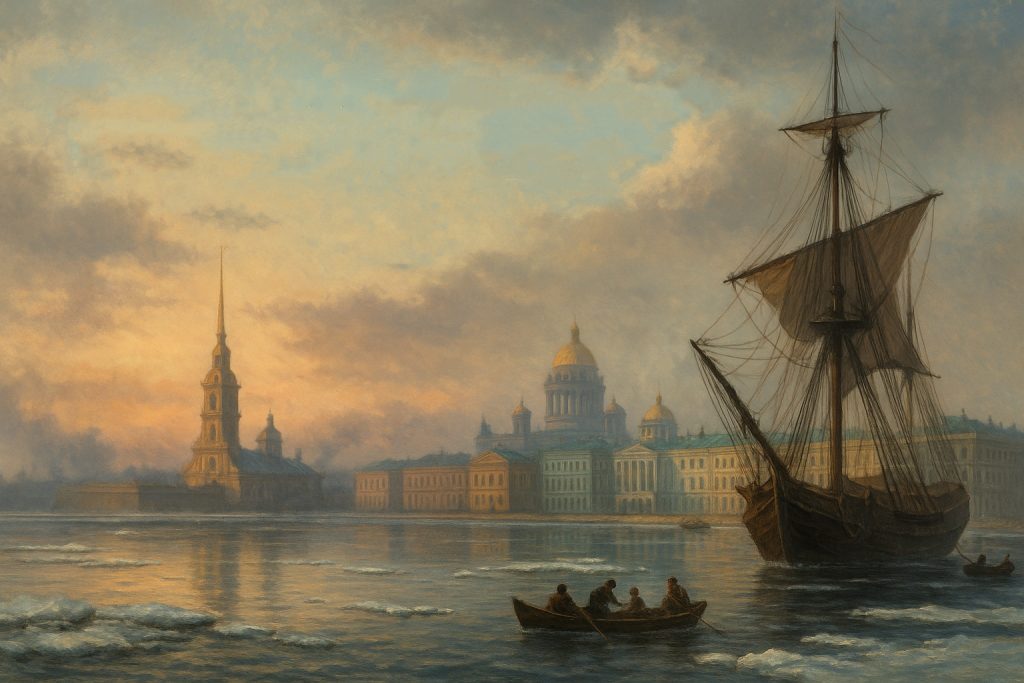
The Enduring Legacy of the Rivers That Shaped European Cities
The rivers that shaped European cities were more than geographical features—they were forces of civilization. They laid the routes of conquest, carried the seeds of trade, and sustained cultures through war, peace, and renaissance. Vienna, Cologne, Paris, and Rome might wear the crown of Europe’s historical capitals, but it’s their rivers that forged those crowns.
Cities rise. Empires fall. But rivers endure.



